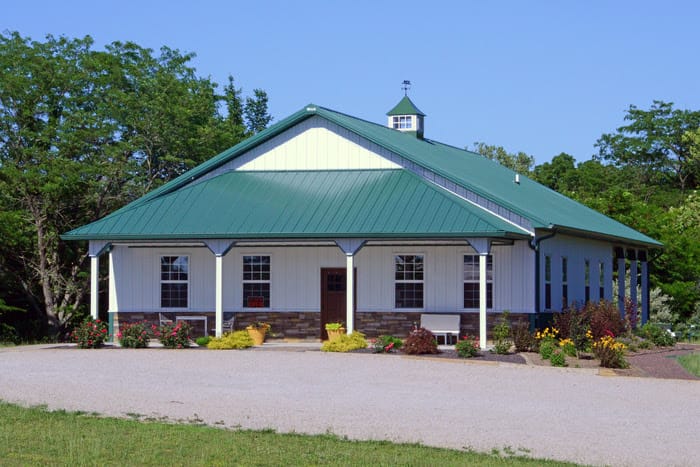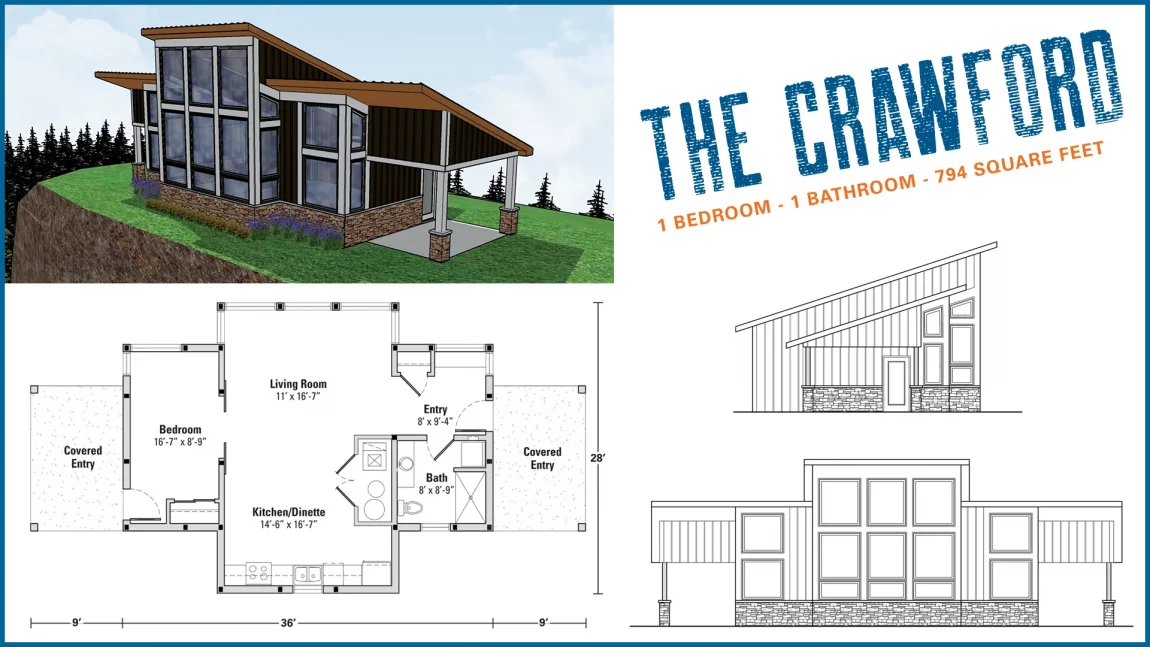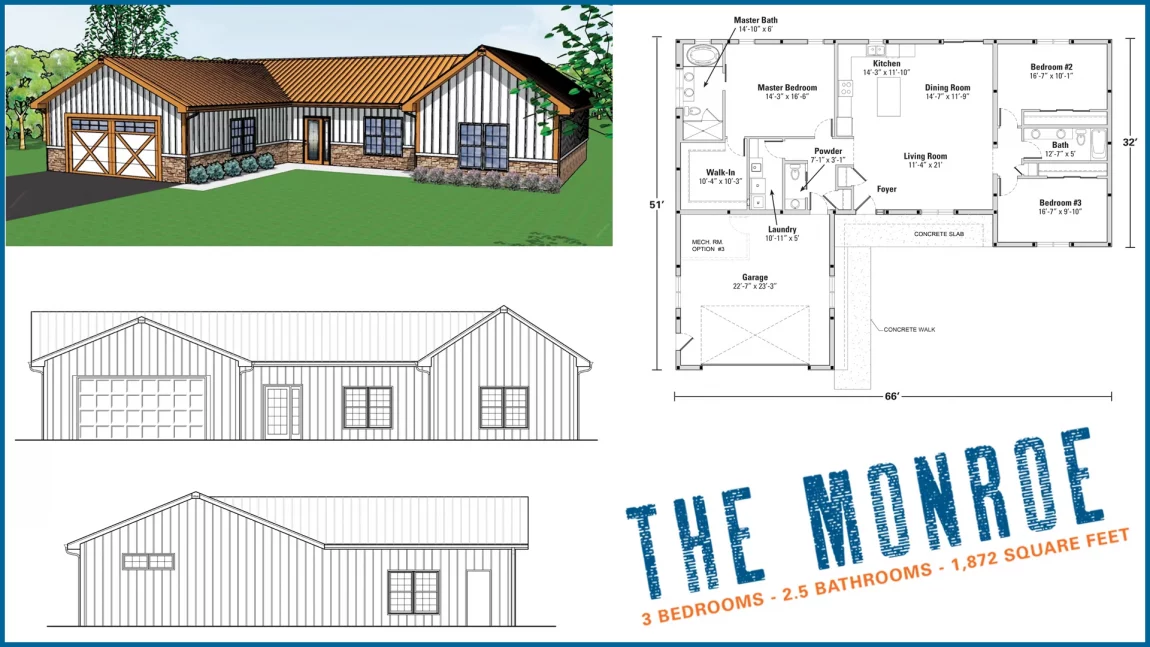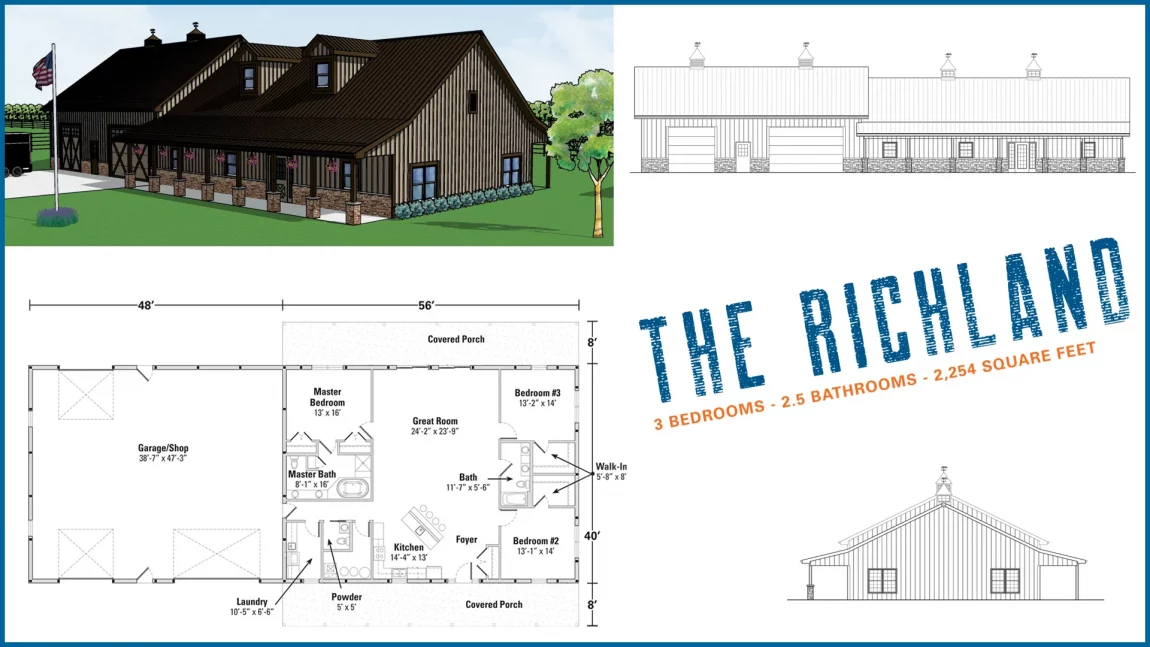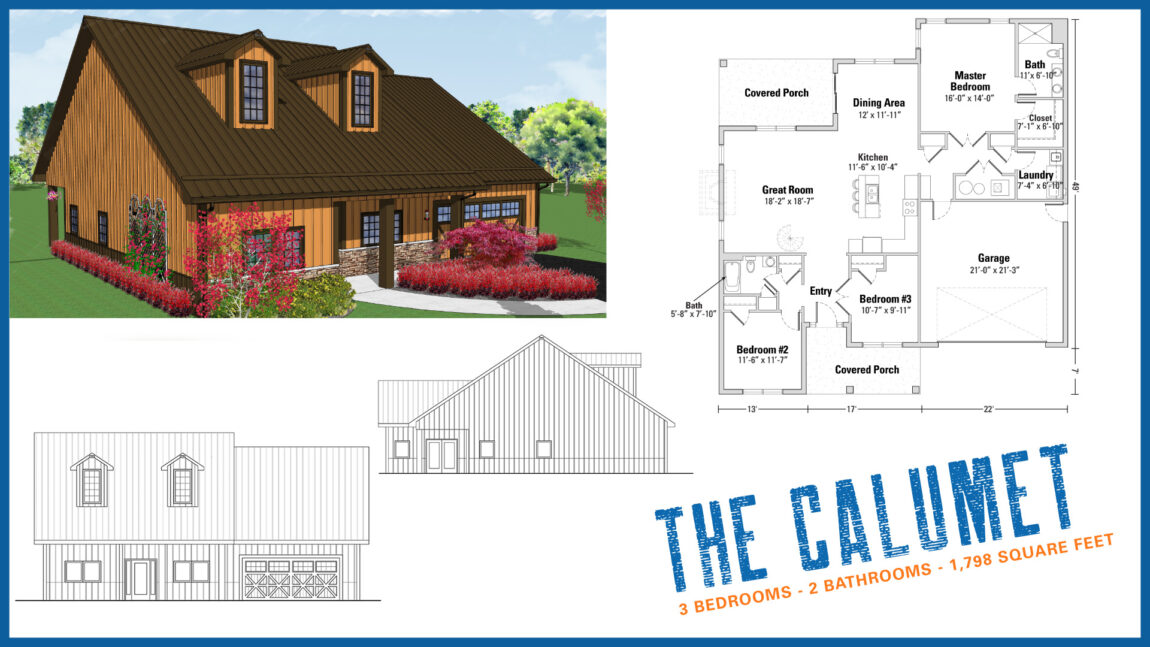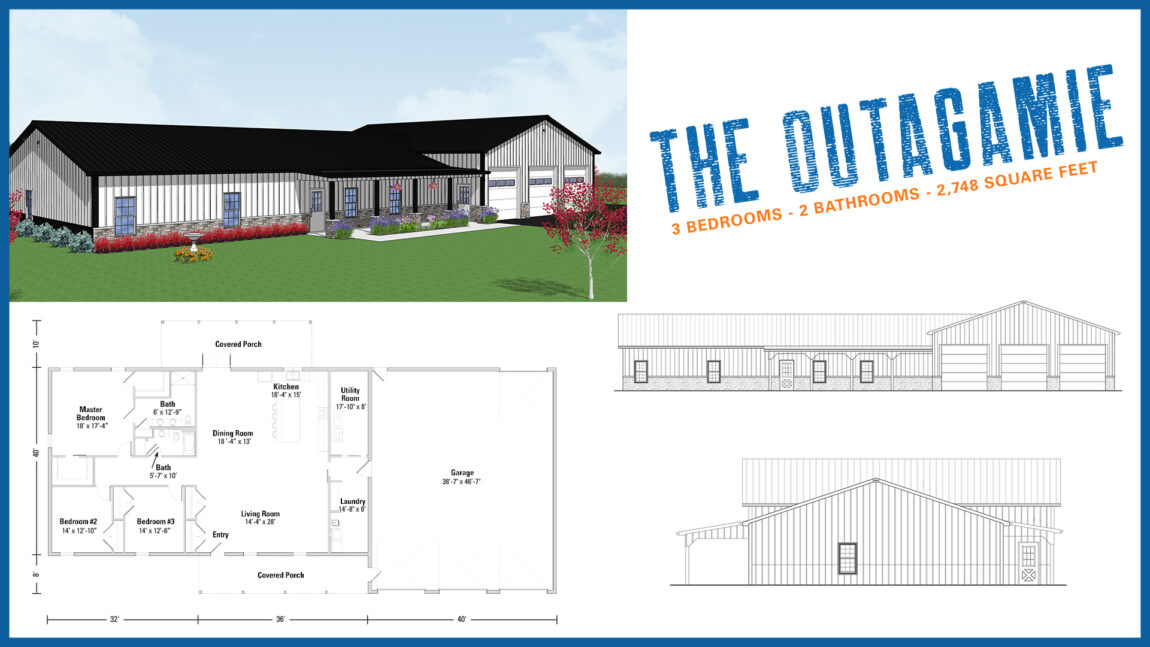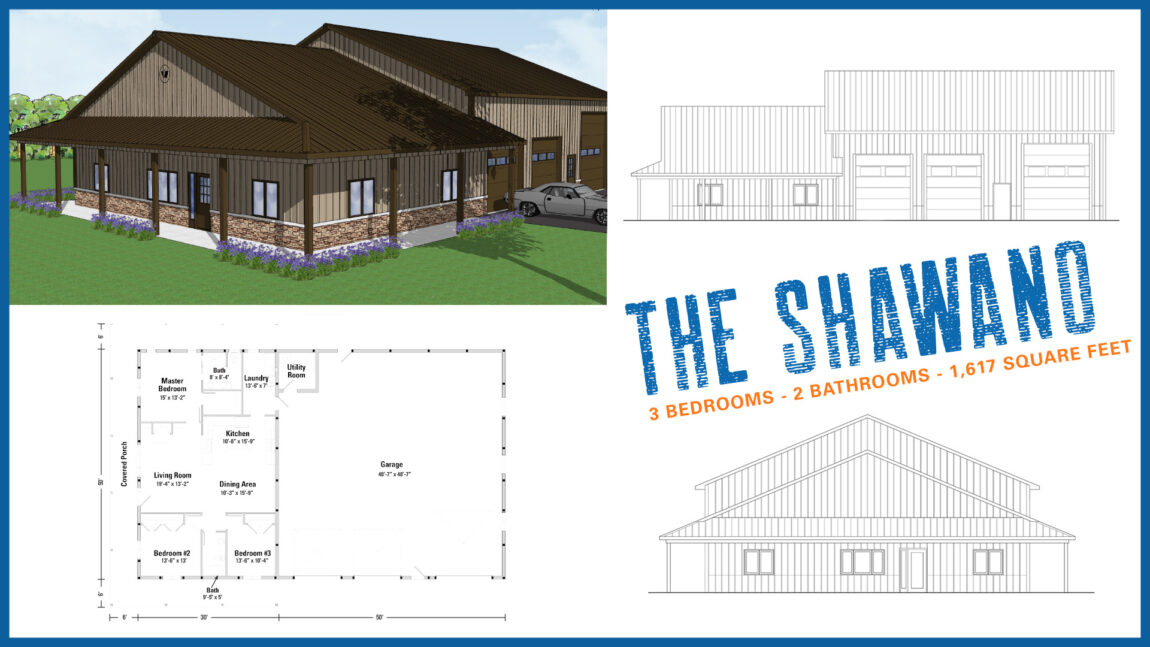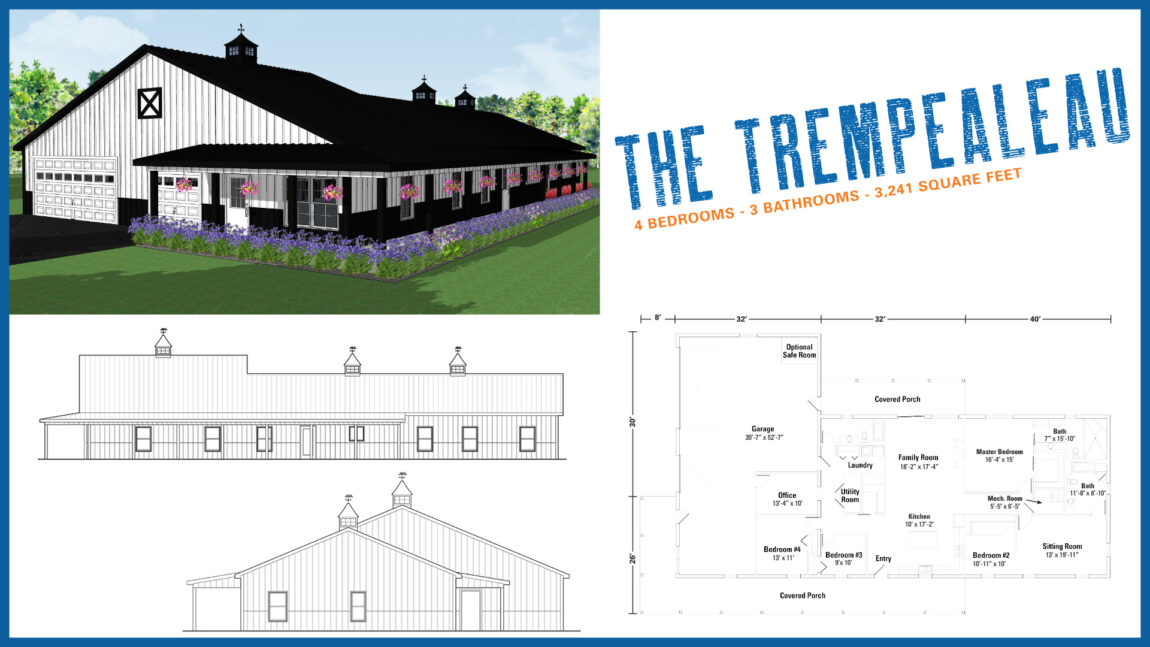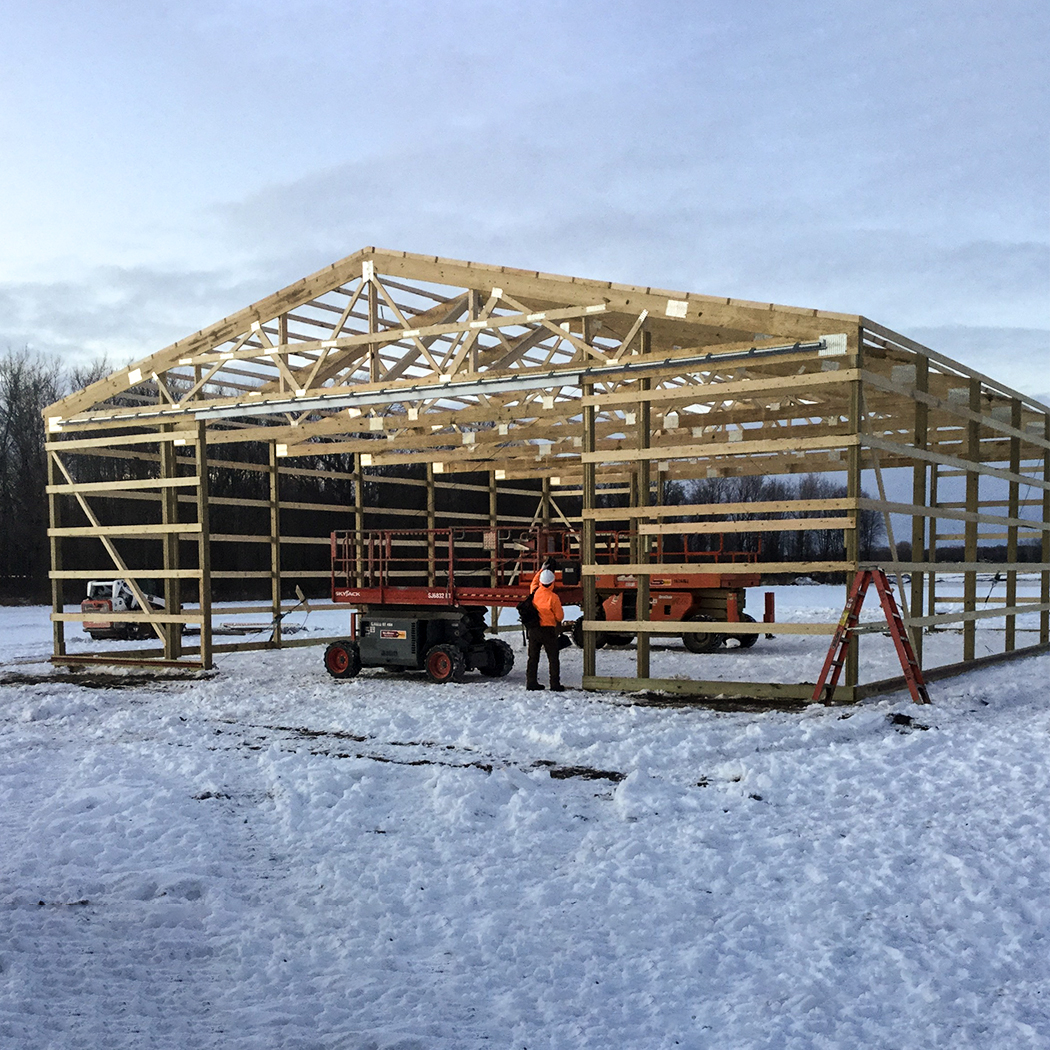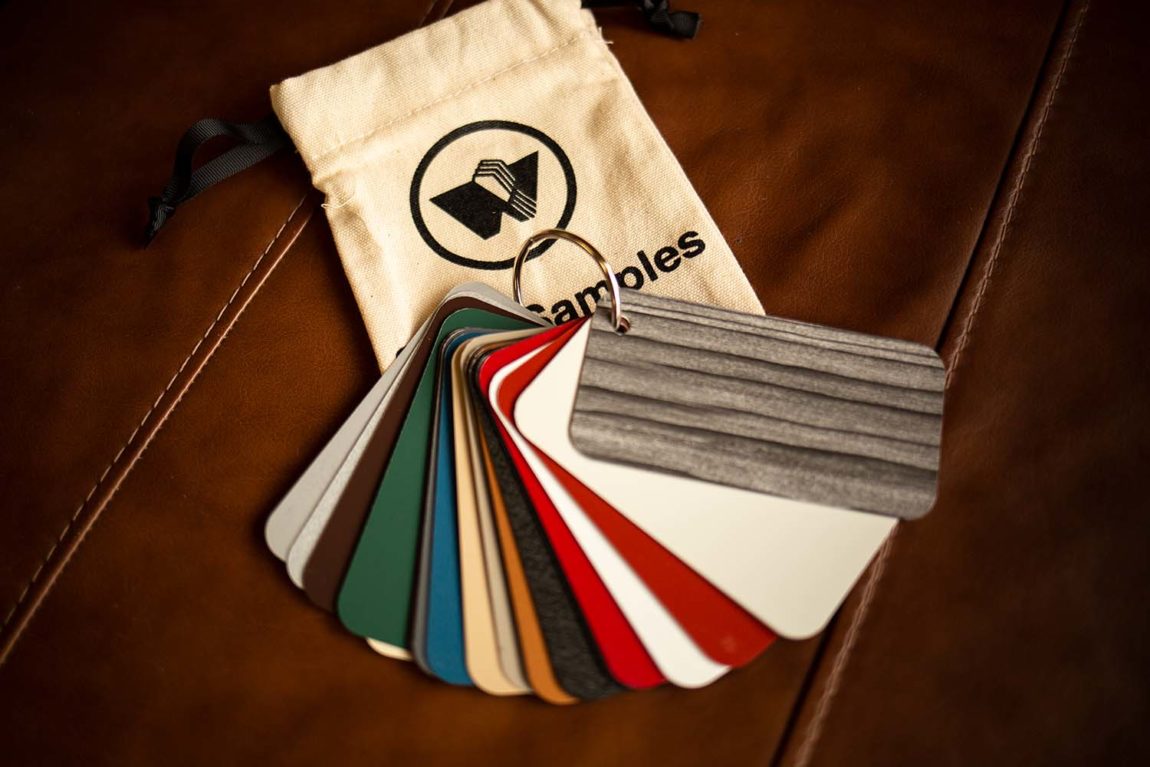"I chose Wick because I looked at all the features and the prices and I don't think I sacrificed any quality and got the best value I could."
Enjoy More Possibilities With a Residential Pole Barn Home
A residential pole barn home is the ideal alternative to a conventional stick-built house when you want to combine a living space with a multi-use toy shed, workshop, or extra-large garage for boats, RVs, and more.
Here are some quick links to different sections of this page:
- Types of Pole Barn Homes
- Benefits of Pole Barn Homes
- How to Build a Pole Barn Home Right
- Pole Barn Home Costs
Shop House vs. Pole Barn Home: Is There a Difference?
“Shop house” may roll off the tongue easier than “pole barn home,” but they are basically the same thing. Throughout this page, we’ll generally use the term “pole barn home,” but you can think of a shop house and a pole barn home as one and the same.
Types of Pole Barn Homes
Pole barn homes can be designed and built for a variety of uses—like a year-round dwelling, a guest house, or a weekend getaway home.
On top of that, pole barn homes open up the possibility for incorporating your hobbies and interests into a single structure. One common option is a shouse, also known as a shop house, which combines a workshop and/or large personal storage area with a living space.
More specialized options include equestrian facilities combining a riding arena, stall barn, and a personal residence.
Check out our gallery to see various types of pole barn homes.
Interiors of Pole Barn Homes
Unlike conventional stick-frame houses, pole barn homes are built with post-frame construction, which doesn’t require load-bearing interior walls. That can create amazing options for your interiors in addition to exterior decks, patios, and porch areas.
Pictures say it best. Take a look at our gallery of pole barn home interiors.
Free Pole Barn Home Plans
What’s your vision for your pole barn home? A great place to start is with our free residential pole barn home plans. These are a great example of how pole barn homes can work for a range of needs—and budgets.
To download these plans and choose from our other layouts, visit our Residential Plans page.
Is a Shouse the right fit for you?
Take our quiz to see if a Shouse is the right fit for you!
Take the Survey
The Benefits of a Pole Barn Home vs. a Conventional Home
There are lots of reasons to consider a pole barn home over a conventionally built stick-frame house. If you recognize your needs—or wants—in the following, a pole barn home could be right for you.

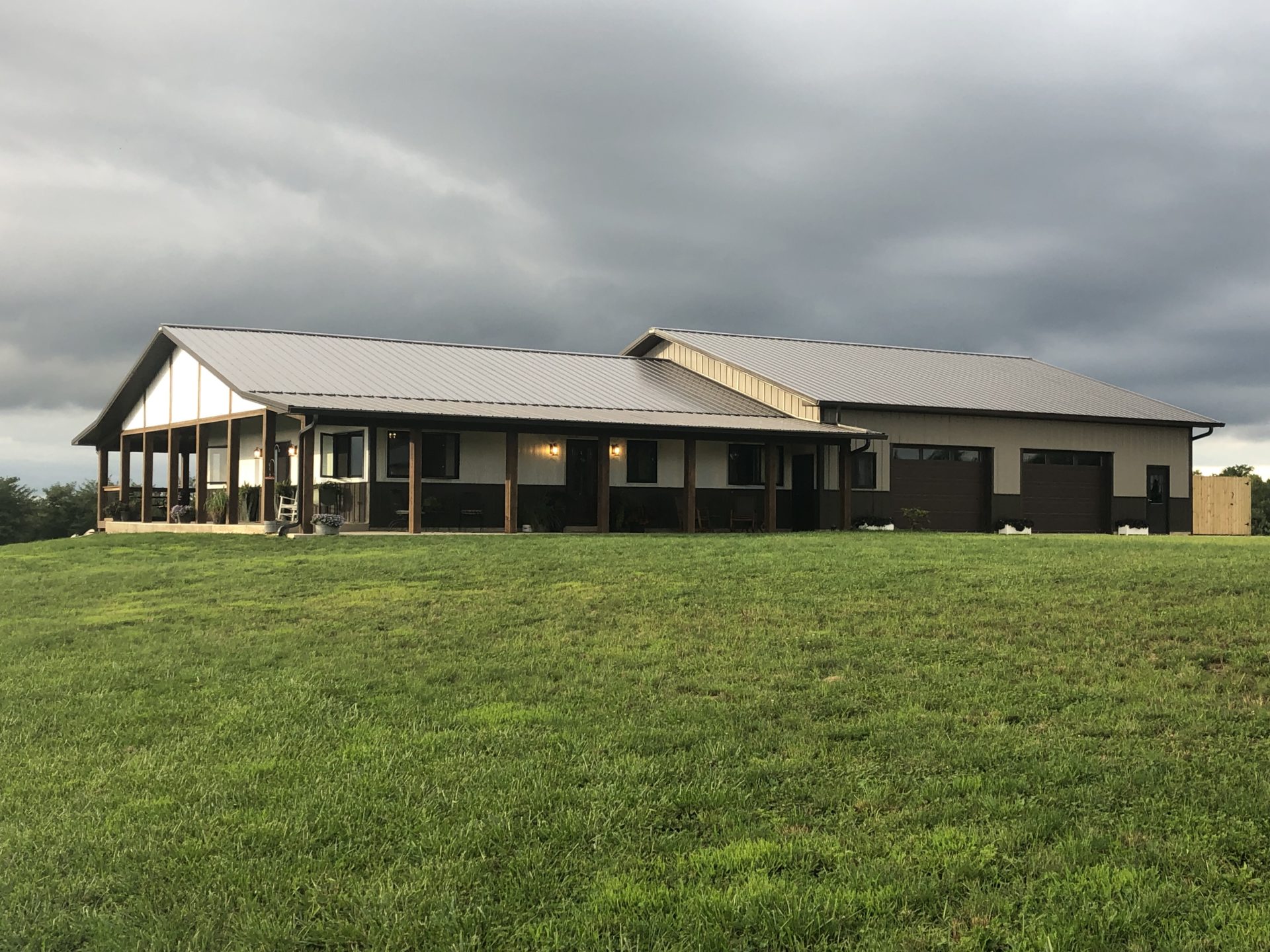
Consolidated structures
Construction costs go down with a single building, and so can your taxes. By combining structures, you can potentially reduce taxable square footage.
Faster construction time
Pole barn home construction involves fewer overall building components than a conventional house. On top of that, the majority of components used in a pole barn home will be prefabricated, arriving at the project site ready to put into place. These factors can shorten the construction time significantly.
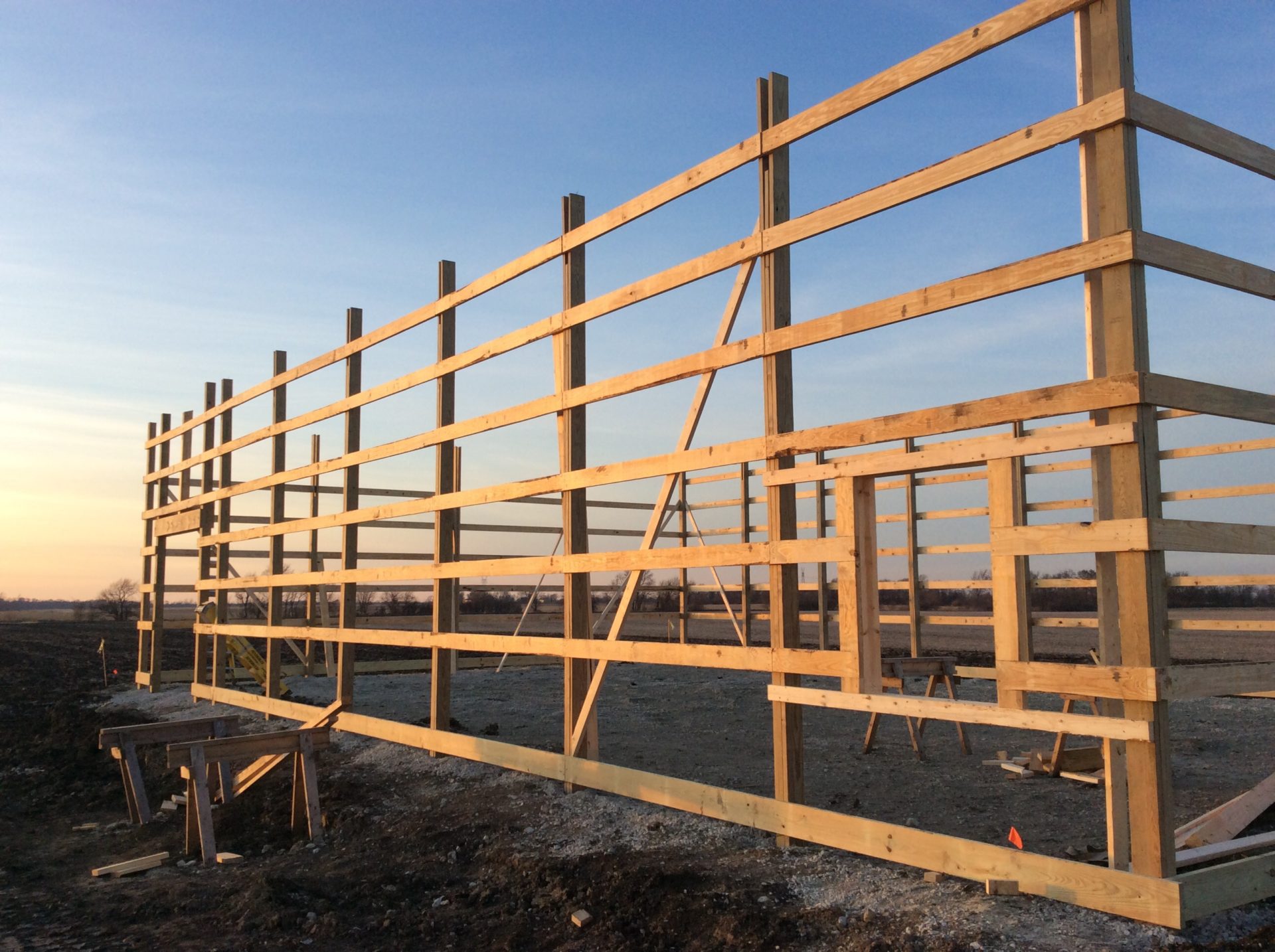
Better foundation options
There are several options for pole barn home foundations, but we’ll focus on the one type that is unique to pole barn homes: post in ground. Posts, either treated wood or concrete, are sunk 4 to 6 feet deep into the ground. A concrete slab is then poured around them. That slab will be at a fraction of the cost of a continuous foundation—which is generally required for stick-frame construction.
More adaptability to site/soil conditions
Post-frame systems in pole barns can be designed to accommodate varying soil wall pressures, either from within or from the exterior of the building wall. This can be accomplished without the extensive excavation costs and expensive concrete foundation system needed for stud walls in stick-frames.
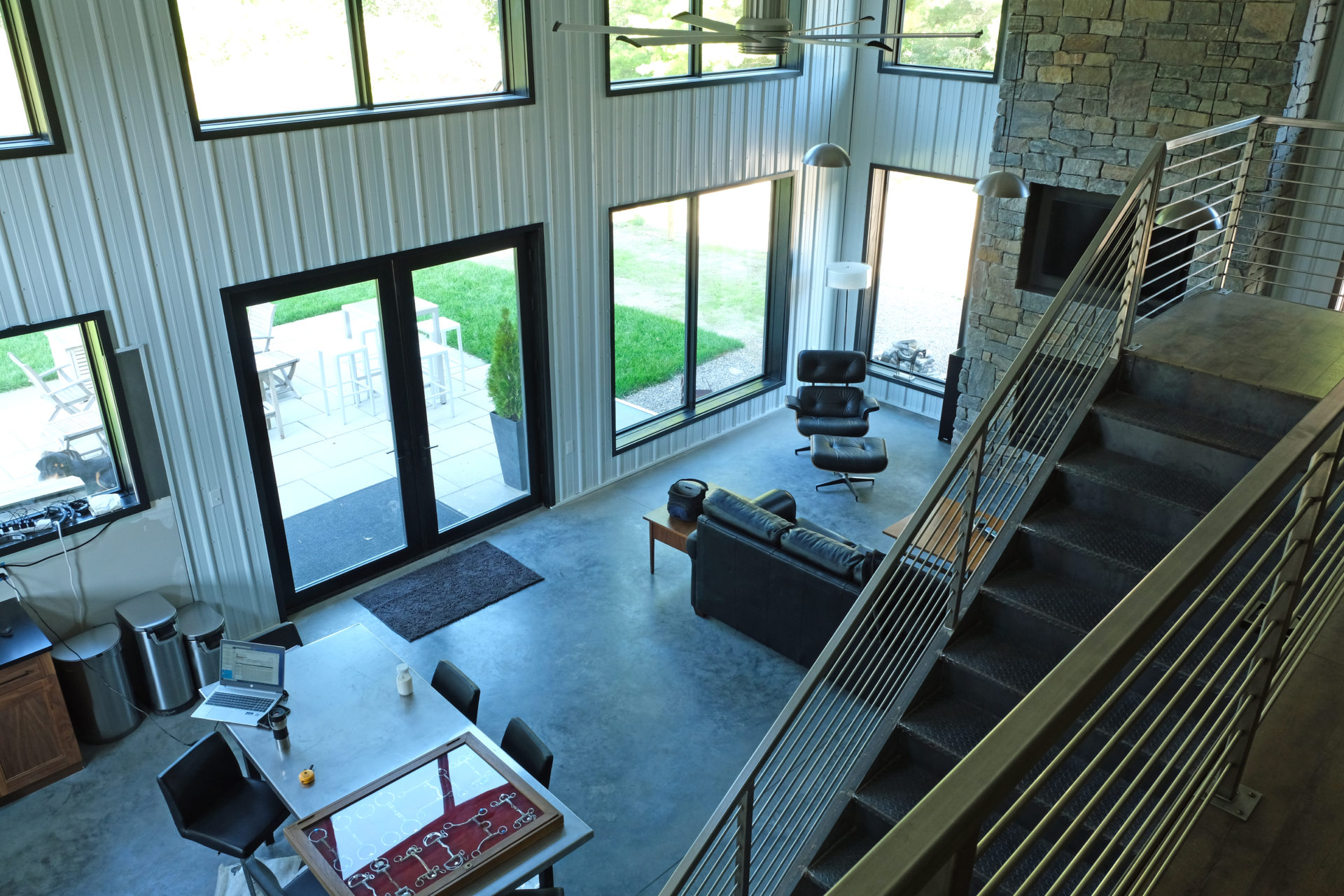
A more flexible, unobstructed layout
Don’t let load-bearing interior walls limit your dream home! A pole barn home’s clear-span trusses—and resulting wide open spaces—broaden the possibilities for what you can do with the interior.
Extra-high walls and extra-large window openings
Thanks to the larger structural members in a post-frame building, you can construct higher walls much more easily than with stick-built structures. And the columns used in pole barn homes can have on-center spacing of 8 or more feet, a fact that makes extra-large window openings much easier—and less expensive—to construct.
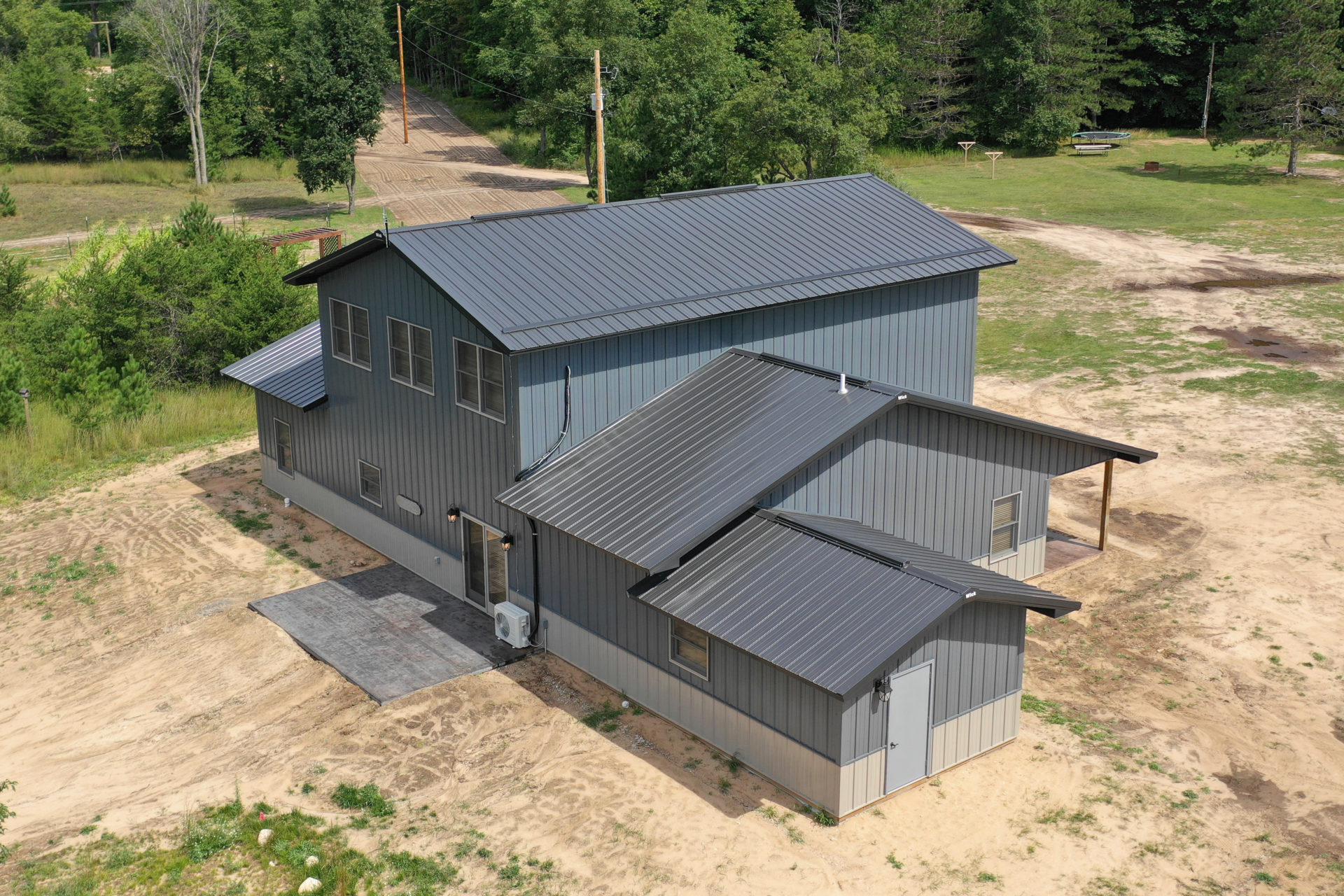
Easier additions down the road
Being able to expand your space cost-effectively creates further longevity for your building. Options like large overhangs and even major additions are easier to construct off of the posts of a pole barn home rather than the stud walls of a stick-frame building.
Superior durability
The post-frame construction method for pole barn homes uses larger components in its structures. And the larger the component, the longer the lifespan.
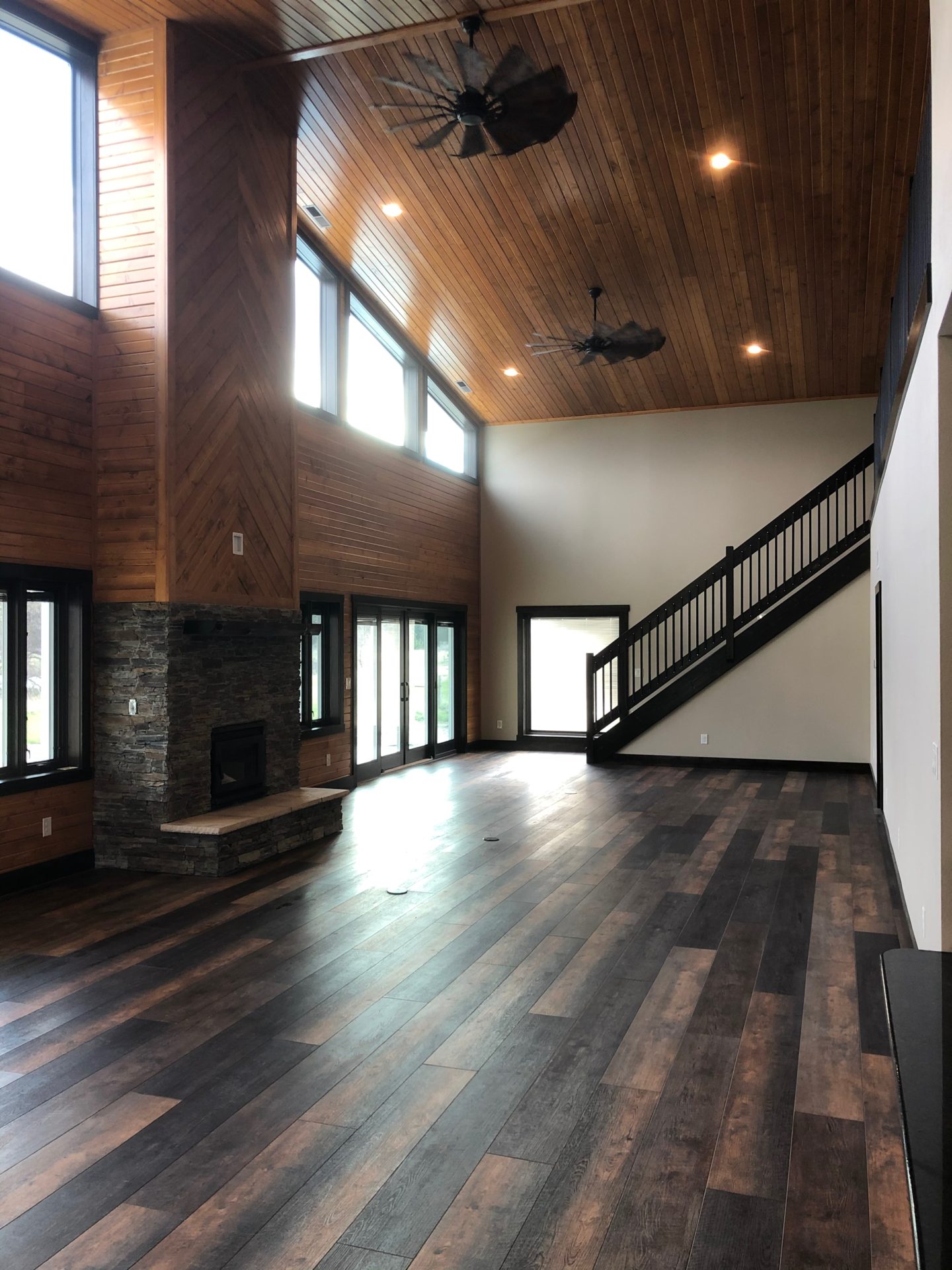
Vaulted ceilings
High ceilings are a more cost-effective option in a pole barn home. They create spaciousness and can transform your pole barn home’s interior into an experience.
More insulation, fewer thermal breaks
A post-frame building will typically have columns placed 8 to 10 feet apart, instead of the conventional 1 ½ to 2 feet with stick-frame stud wall systems. That reduced obstruction in the walls means more room for insulation and less chance for cold to travel through the wall.
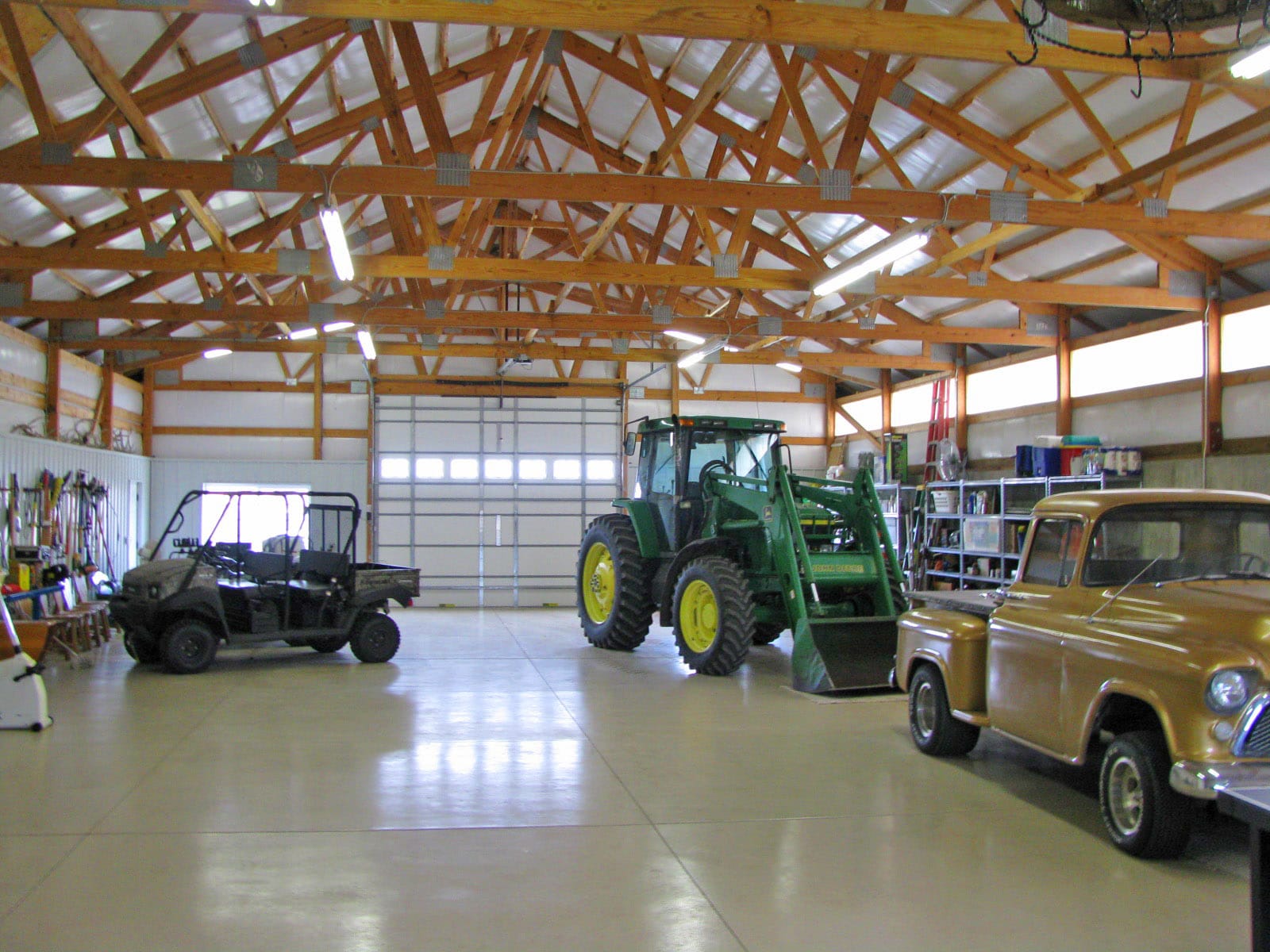
Auto storage and display
Your pole barn home can work great for parking and storing a variety of cars, and you can make it spacious enough for a driving lane.
Spacious toy shed
Say goodbye to squeezing vehicles in and enjoy a super-spacious toy shed or shop garage.
How To Build Your Pole Barn Home Right
Start with a qualified, well-experienced pole barn home builder. With over 65 years of building experience, Wick constructs buildings using smart, proven techniques to help ensure customers enjoy a safe, energy-efficient, and long-lasting pole barn home.
More than that, we use materials of exceptional quality and give you options to create a pole barn home that meets both your functional and aesthetic needs.
Durable steel and paint
Wick pole barn homes include full-hard exterior steel, with 80,000 PSI hardness or better. This results in less dents. Our steel is also G-90 galvanized for better corrosion protection, and our paint is warrantied not to chip or crack for 40 years. (See more on paint options below.) Want a different finish on the exterior such as stone wainscot or a full wall? We can do that too.
Kimberly-Clark BLOCK-IT® House Wrap technology
Better weatherization for your pole barn home means less chance for moisture, rot, mold, and structural failure. Wick uses Kimberly-Clark BLOCK-IT® House Wrap patented construction technology that creates a breathable barrier as it prevents water penetration. You get premium protection that’s also affordable.
Pole Barn Home Costs
Are you interested in a pole barn home primarily because you think it’s going to cost a lot less than a conventional stick-frame home? If so, it’s important to understand it’s not that simple.
In terms of design, foundations, long-term maintenance, and insurance, you may be able to achieve a degree of savings with a pole barn home.
That said, we want you to be as clear-eyed as possible as you consider a pole barn home. When you’re trying to understand a pole barn home’s cost, be sure to consider everything that goes into the project you’re envisioning.
That will likely mean much more than just the building itself. In fact, it’s not uncommon for the outer shell of the building to be around one third of a pole barn home project’s total cost.
The cost per square foot is likely to be on par with a stud-wall or stick-frame home of equivalent square footage for the finished living space. To get an idea on the current cost per square foot, you can find national and regional information at the following link How Much Does it Cost to Build a House in 2024? (houzeo.com).
Primary Cost Drivers
Major cost drivers to have a pole barn home built include:
- Design and engineering services
- Building materials
- Construction
More specific potential cost sources include:
- Excavation and site work
- Concrete slab forming and pouring
- Well work / Septic work
- Mechanical / Electrical / Plumbing
- Finish carpentry for interior layout
- Interior walls, flooring, fixtures and cabinetry
- Landscaping / Concrete flatwork
Many of these factors can vary widely in their price, depending on your site needs, your preferences, and your budget constraints.
Here are additional considerations to help you understand a pole barn home’s cost:
NO BASEMENT REQUIREMENT
Depending on your needs, the foundation of a pole barn home may only require a concrete slab—not a continuous foundation such as a basement, which is generally a requirement with stick-frame construction.
Note that the concrete and excavating costs for a continuous foundation can often be around 15% of overall project costs. If you’re weighing the potential cost difference between a pole barn home and a stick-frame home, this is a major point to keep in mind.
FUNCTIONALITY
Think through your pole barn home’s actual uses. Will it be a year-round dwelling? A simple guest house? Maybe a weekend getaway home?
Could you benefit from combining separate structures the way a shop house does, which connects a workshop or storage shed with a living area? If so, how much square footage will it require, especially if you’re storing large items like boats and RVs?
ZONING LAWS, BUILDING CODES, NEIGHBORHOOD COVENANTS, ETC.
The various guidelines you need to follow—and restrictions you need to honor—can play a significant role in your initial construction costs, as well as ongoing expenses.
It’s also important to remember that, legally speaking, you can’t necessarily build anything you can imagine. However, with a good plan and a knowledgeable building partner, you can usually get what you want.
PROPERTY
Do you already have a piece of property suitable for a pole barn home? That’s one of the first questions a pole barn home builder will ask you.
Then regarding that property, you need to be aware that its location can impact costs related to utilities, landscaping, aesthetic decisions, and more—all of which will affect the overall cost.
FEATURES
Just like any type of house, a pole barn home’s cost will vary widely based on the features you choose for it.
You’ll benefit from prioritizing your wants. For example, are you going for the ultimate kitchen? How many bathrooms do you want? Do you want in-floor heating in your garage or workshop? And what about porch overhangs?
Wick Buildings has a free Residential Building Planning Guide to help you understand your options and decide what’s right for you. You can get one from your local Wick Builder or sent directly from Wick Buildings.
FINANCING
Financing a pole barn home may not be exactly like financing a conventional home. That’s largely because most lenders are much more familiar with financing conventionally built stick-frame houses.
However, as pole barn homes become more common, more and more lenders understand the nuances—and benefits—of pole barn homes. As a result, they’re now more open to financing them.
What can you do? For starters, seek out the right kind of lender. Wick encourages you to contact the financing organizations listed on our Financing page. With many years of experience financing post-frame structures, they will help you find the right option for your project.
Pole Barn Home Builder Locations
Wick provides pole barn home building services in:

| Colorado | Illinois |
| Indiana | Iowa |
| Kansas | Kentucky |
| Michigan | Minnesota |
| Missouri | Nebraska |
| Ohio | South Dakota |
| Wisconsin |
Frequently Asked Questions
What is a pole barn home?
A pole barn home is a single-family residential structure built with post-frame construction. Builders use highly engineered, prefabricated laminated wooden posts or columns, trusses, and other components that arrive on site ready to assemble. Although no continuous foundation is required, a pole barn can be built on frost walls, a concrete slab, or a basement.
Can pole barn homes have a basement?
Yes. A pole barn home does not require a continuous foundation, such as a basement. However, it’s definitely possible to have a basement under a pole barn home if you want.
What’s a pole barn home inside like?
You have just as many options for the interior of a pole barn home as you would with a conventional home. In fact, because of the way a pole barn home is constructed, you have more flexibility for how you design your floor plan.
What are companies that build pole barn homes?
Pole barn home builders typically specialize in what’s called post-frame construction. Wick Buildings was founded in 1954 and is one of the nation’s largest producers of post-frame buildings, including pole barn homes to fit a range of uses and budgets.
Are pole barn homes cheaper?
A number of factors can potentially make a pole barn home less expensive than a conventional house. These can include faster construction time, reduced excavation costs, and less site preparation. However, it’s always wise to price out your entire project before making cost assumptions.
Who builds pole barn homes near me?
Through our own builders, as well as our network of builder partners, Wick Buildings constructs pole barn homes within a 16-state area. Find a builder near you!.

